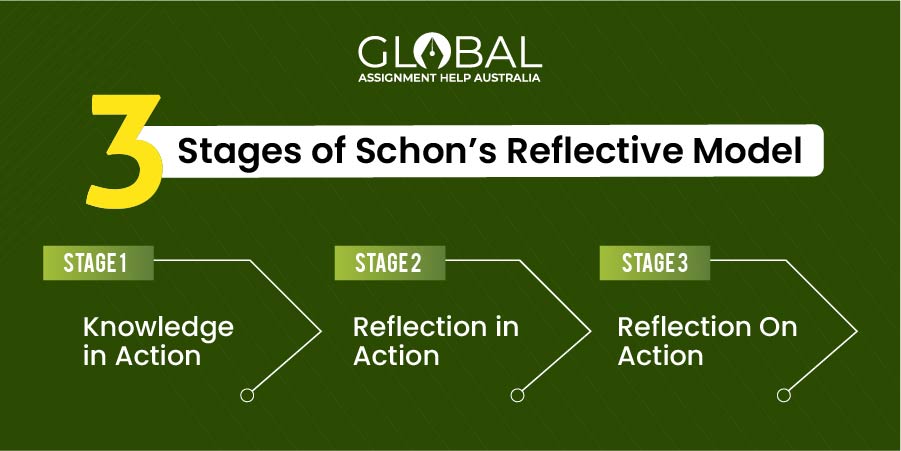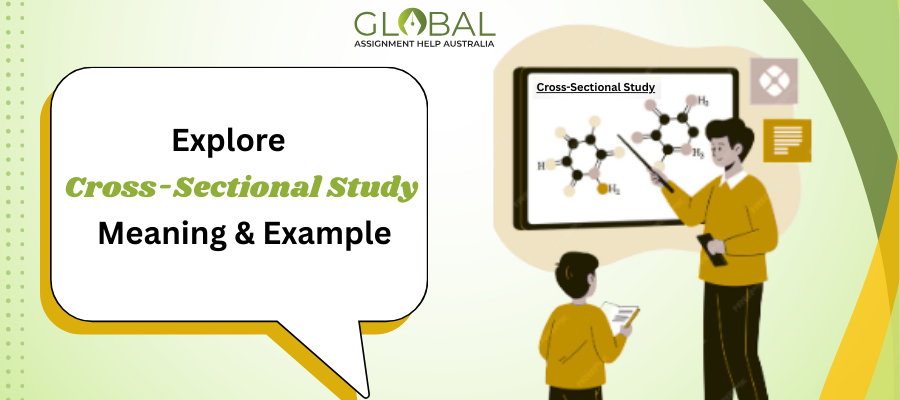 Offers
New
Order Now
Offers
New
Order Now
Learning is not simply a matter of getting knowledge. It is about the process of enhancing real-world scenarios and reflecting on them. Through this, individuals can gain insightful knowledge from their experiences. This is a line said by Donald Schon, which is very accurate, and there are many things like this that you will read in this blog about Schon's reflective model. Do you know why we are discussing all of these things here? It is because there are many of you who are still looking for the page where you get all the crucial information about this theory.
So, in this information write-up, experts will guide you through the meaning, stages, benefits, and drawbacks of mindfulness, how it helps enhance learning, and a few examples of it. So, let's begin by reading ahead!
Schon's reflective model is a very innovative model that focuses on three concepts: knowing & reflecting in action and then reflecting on the action. The theory by Donald Schon is based on the idea that professionals can learn from their own situations and actions in three stages. It is mainly used in nursing care education, providing a dynamic learning process that helps you learn how to prepare an action plan immediately. Moreover, you learn from the responses and actions and understand the consequences of actions, keeping you engaged and motivated in your learning journey.
There are four components of Schon's model of reflection. It includes the following:
Now, you must have understood the meaning and components of Schon's model of reflection . Also, if you want guidance in any other theory, such as, Gibbs' reflective cycle or any other, you can read our blog. But do you know where you need to use it that can benefit you, and what are its limitations? No worries! Check the following sections and learn about them.
Go Ahead and Check Out Our Customer Reviews
Do you know what are the advantages and disadvantages of Schon's model? It is crucial to know about it because if you try to imply your theory, you must know everything about it. So, its benefits and limitations will help you know when the right time to use it is. Continue reading it ahead.
There are many advantages to Schon's reflective model. Learn about a few of them and enhance your learning.
If you try to implement the model in your real-life problems, it will become smooth learning for you. This will allow you to analyze and identify where you are stuck and how you can learn from it.
This theory is best for boosting your decision-making process. If you do a proper study on the loopholes and work on them, you become confident to try new things and make a better flow in real-life scenarios.
If you get stuck with a problem in your practical experience, you can try using this model. It will benefit you to enhance your ability by giving an idea of what went wrong and how to remember it for next time.
It is crucial to become self-aware of one's own performance or mistakes. Moreover, Schon's model works best to enhance this in real-life scenarios.
So, these were the few advantages of using Schon's model of reflection. But if there are some benefits, it will surely have some drawback, too. Study about it ahead!
Do you know what are the drawbacks of Schon's model of reflective? Let's take a glance of it and know where you need to pay a little more attention at.
If you implement this model in your real life to learn about where you are lacking, you need to have enough time. It is because this model takes some time to identify and reflect on your work.
It would be tough for you to implement this theory if there is no suitable environment. Thus, if you really want to try something to change, you need to create a culture that includes an open discussion.
By working on any work by using the reflective methods, you need to include some resources. For example, training, facilitation, and more.
So, these are the disadvantages of Schon's model of reflective. but do you there are three stages that you need to follow for a proper results? Check it ahead!
There are three stages of Schon's model of reflective that you need to apply to your problems for the best learning. Moreover, in the pointers below, we have discussed this in detail. Continue reading.

This section, 'Knowledge in Action', is a crucial phase where you establish your existing knowledge of the subject. It is here that you identify what you already know or have and how it can be applied to the problem at hand. This phase sets the stage for the rest of the process.
Some of the questions that can help you are the following:
The 'Reflection in Action' phase is a vital part of our model. Here, you describe the ongoing situation and the actions you're taking. It's also a time to evaluate and express your feelings during the process. Additionally, you can factor in any other elements influencing the problem and your actions, such as people, other issues, or a lack of specific resources.
These questions can help you to analyze in a better way:
This phase happens after the event has happened and explains the outcomes and other details. Additionally, if applicable, you have to explain what led to the issue and how you can avoid it in the future. You shall analyze how to handle such situations more effectively the next time.
The following question will assist you in better answering:
These are the three stages of the reflective model. Moreover, if you want to learn better, you need to follow this. Also, to make it easy for you, we have also added a few questions that you can ask yourself while working on your task by adapting the model. It is not only students who can use this method to improve their teaching; teachers can also use it. How? Let's understand that, too.
Get Help Today!Schon's model of reflection is very best for professionals who teach the subjects such as psychology, healthcare, business, engineering, and social work, so if you want to know how you can implement this theory in your teaching strategies.
Using reflective model in your teaching will impact you decisions and actions. Moreover, as a professor, you need to learn how to powerfully decide the right idea.
Identifying how to get better will only be possible if you know your strengths and weaknesses. By this, you can learn how to work on the weak points and emphasize the stronger ones.
If you use a reflective model in your teaching process, you can try adapting and adjusting the situations and context. This will also help you remember your points or strategies better.
So, these are a few things that you can improve by adapting and implementing the Schon's model of reflection in your teaching strategies. Let's look at the examples and enhance the learning.
Examples play a vital role as they help in understanding in a better way. Check the two examples to see
how this model works in real-life cases.
Situation: You're a teacher who thought of finishing the a lesson but that did not go as planned. Moreover, due to this, many students seemed confused.
Reflection-In-Action: As you noticed students getting confused, you changed and adjusted your teaching method. For instance, you tried using simpler and relevant examples or asked more questions to engage them and enhance their understanding.
Reflection-On-Action: After the lesson ended, you tried thinking about why students were confused. You also considered how you can change the teaching methods and strategy for future lessons. For example, you could use more visual aids or break down concepts further.
This model helps one in learning from experience both in the moment and afterwards.
Situation: As an intern, you were working at the hospital and were asked to handle two patients. However, things didn't work out accordingly.
Reflection-In-Action: You noticed that handling two patients was not working with the intern and needed some guidance. So, you decided to change the strategy. First, you tried to engage the patients in your conversation, and then you worked.
Reflection-On-Action: So, later, after handling them, you thought about this and got to know where you were lacking and how changing it helped you for your future work. It can be by discussing more relatable talks with them or giving them rewards.
This model emphasizes learning from your own experience in the moment and later on.
These two examples have surely helped you learn more about the Schon's model of reflection. But what if you are still looking for help? No worries; learn how our experts can solve your problems.
So, now you must have understood everything about Schon's reflective model. If you still feel that you need more assistance, you can get help from our experts. They have extensive knowledge in various subjects, and you can use this theory. Not only with this, but you can also ask our writers to show you the path in all the academic subjects.
At Global Assignment Help Australia, we offer various services, such as dissertations, research papers, coursework, assignments, and more. If you want to check them out, you can visit our website and check our service section. Why worry when we are here to assist you? Get the best paper today!
You may also like to read:
How to Write an Impactful Climate Change Essay? Key Aspects!

Grab this exclusive offer and start your journey to savings today! Act quickly, as this special offer won't be around for long!

This blog explains what is a hyperbole, provides engaging examples, & explores how to use hyperbole.

Explore 150+ funny debate topics to spark laughter, creativity, and lively discussions in 2025

Cross-Sectional Study basics explained with steps, examples, and comparisons.
Limited Time Offer
Exclusive Library Membership + FREE Wallet Balance
1 Month Access !
5000 Student Samples
+10,000 Answers by Experts
Get $300 Now
Update your Number

